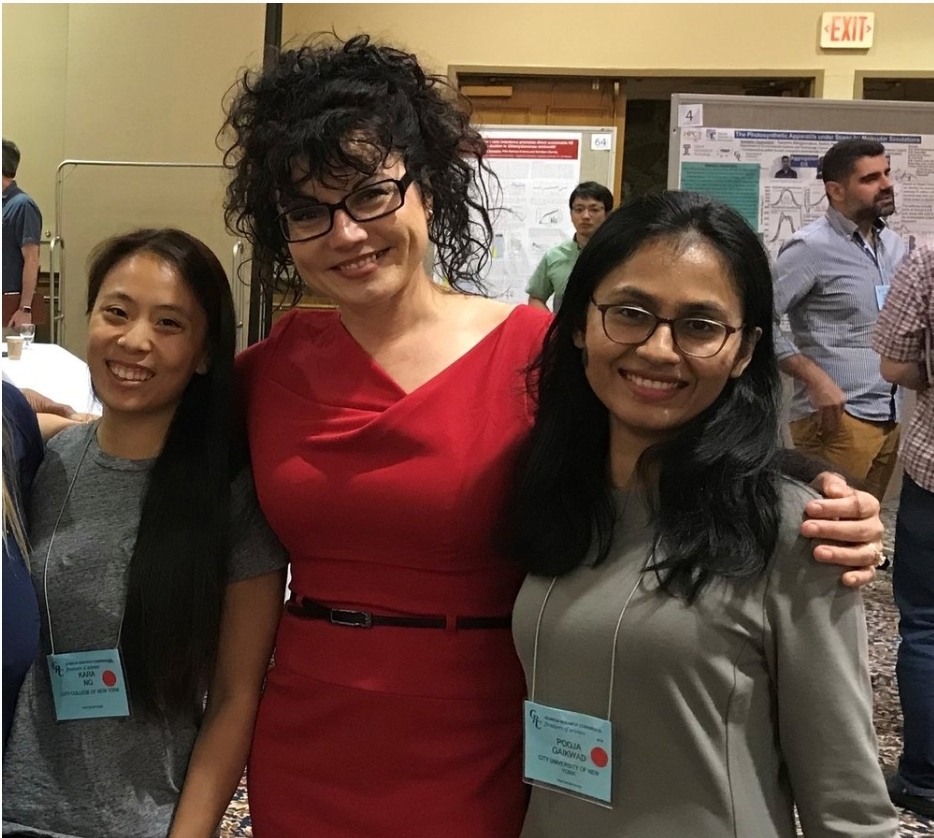Solar energy cells are devices designed to capture sunlight and convert it into electricity, a fundamental part of solar panels that harvest solar energy.
Most commercial solar energy cells only have 15% to 20% efficiency in converting sunlight to electricity. Redefining the way we look at solar cells is Dr. Dorthe Eisele, an assistant professor of physical chemistry at City College. Her fundamental research focuses on looking at the functions of nature for inspiration when building solar energy cells.
When researchers approach building solar energy cells, they are typically aiming to build a robust cell that is resilient to changing environmental conditions.
Eisele believes there is a more productive way to look at it.
“Robustness requires changing, adapting to changing and environmental conditions,” Eisele said in an interview. “It is the ability for a system to respond adaptively to changes in its environment.”

She gave the example that buildings are built with nature in mind — some buildings are robust to earthquakes, as they can move with the circumstances that are presented.
Eisele aims to create more effective solar cell devices by putting these ideas of robustness at the center of her research.
But, with the robustness of these bonds comes fragility, making it difficult to work with the molecules. Eisele’s research focuses on stabilizing these molecules to use in solar devices while maintaining the robustness that we see in nature. Her goal is to copy the framework that light-harvesting systems use.
A process we can see this robustness in is photosynthesis, where plants use sunlight to make their own food, the complexes adapt to different changes and respond to their surroundings to keep the plant healthy.
To help carry out this robust process are specialized structures called thylakoid membranes, found in the plants’ chloroplasts where photosynthesis takes place. The membranes consist of self-assembled supramolecular nanostructures, tiny arrangements of molecules that form spontaneously due to non-covalent interaction — weaker forces that do not involve the sharing of electrons — but, rather, by less powerful forces like hydrogen bonds. These interactions allow for molecules to come together and interact without forming permanent, strong chemical bonds.
Hydrogen bonds are one of the weakest bonds in nature and result in changing fragile structural properties. These are intimately correlated with their functional properties. When packing the molecules close together their optical properties are changing.
“Supramolecular assemblies are nature’s most successful material system for solar energy harvesting,” said Eisele.
Eisele uses synthetic chromophores, which are special molecules that capture light and place it inside a protein framework, as a small scaffold to help them work better. The combination of molecules and proteins helps with capturing light and turning it into energy, such as what happens with photosynthesis. The framework has nanotubes, tiny tubes that do not interact with light.
The chromophores are put in a solution that brings them together because of their weak forces. Then, they layer on one another and assemble themselves into tiny double-walled tubes. They turned out to be highly homogenous, making it easy to study varying conditions. Early results showed that under different conditions, such as the solvent and temperatures, the shape of the molecules changed but structurally it was still functional due to the protein scaffold. Upon learning about the results, Eisele said she was ecstatic.
In her next phase of research, Eisele will be working on supramolecular hierarchical assembly, which means building the smaller units into larger structures.
Eisele began her work on this research when she was a graduate student and continued to work on it as a postdoc at the Massachusetts Institute of Technology. She began working at CCNY in 2014.
In 2020, Eisele received $90,000 in funding from the Basic Energy Sciences Department of Energy for Accelerating Biomimetic Solar-Energy Harvesting.
For the future of solar energy, Eisele said she hopes that many more research groups work on finding new ways of incorporating soft supramolecular assemblies into solar cell devices.

Malina Seenarine is a recent graduate of Baruch College where she studied journalism and minored in theater. In addition to writing for The RICC, she’s a contributor for Baruch’s award-winning Dollars & Sense Magazine and wrote for the arts and news section of Baruch’s student-run newspaper, The Ticker. She’s also written for FSR magazine.